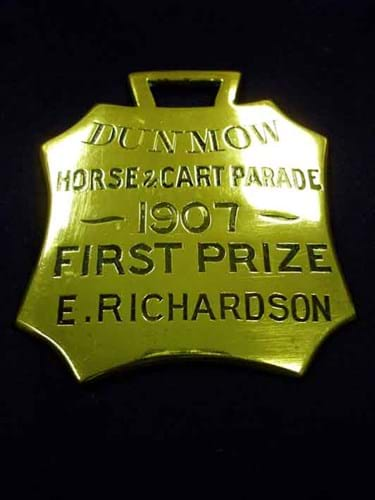
The parades, traditionally held on Whit Monday (the first by the London Cart Horse Parade Society in 1886), were part of a movement to improve the conditions of the thousands of working horses on Britain's roads, but they also marked time in an era of great rural and urban change.
The RSPCA were among those who issued the simple 'best in show' awards. They were highly prized by the carters who received them, but also by an altogether different class of society for whom collecting horse brasses became a highly popular pastime in the 1890s.
Many institutional collections of brasses, such as that in the Castle House Museum in York, were created in this period and it gives some idea of the erstwhile popularity of the collecting hobby that the first mention of fake horse brasses appeared in an article in The Connoisseur magazine in 1916.
Occasional Rarities
Today horse brass collecting is rather less centre stage but just occasionally rarities can command headline sums.
The Reading carriage specialists Thimbleby & Shorland's (12% buyer's premium) still conduct regular sales of tumblers, rein hangers, brewery studs, hame plates, blind halters, face pieces, martingales et al. And heremembers of the National Horse Brass Society converge.
T&S's March 6 sale included two reward brasses, one simple shield-shaped brass stamped Dunmow, Horse & Cart Parade, 1907, First Prize, E Richardson,the other, a large bell-shaped brass with raised centre depicting a horse inscribed Awarded to Prize Winner of the Pennsylvania Work Horse Parade Association, June 3 1908.
While the average Victorian or Edwardian horse brass can now be bought for under £10, a similar valuation here would be somewhat wide of the mark. They sold for £800 and £280 respectively.
From a rare copper post horn that folded to fit in the pocket (£480) to a fine holly driving whip with ivory handle by Callow (£420), this was a sale that celebrated Britain's rural past.
Leading proceedings was a milk churn with a brass top and tap engraved Trefonen Dairy. These display pieces can often command several hundred pounds but this one sold to a collector at a punchier £2000.




